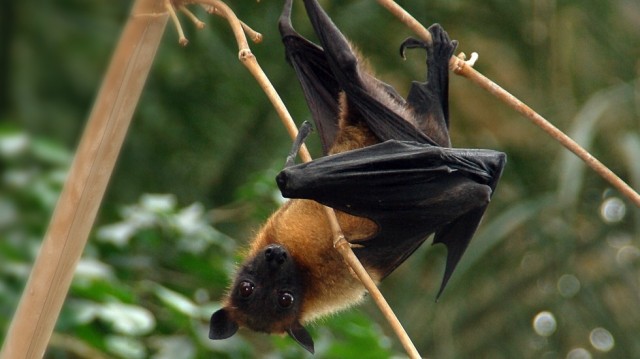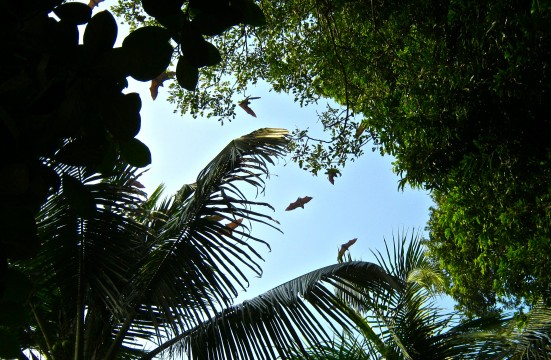New research from the University of Wisconsin suggests that deforestation is promoting the spread of a disease called Nipah virus in Bangladesh. The virus has no cure, no vaccine -- and a mortality rate of more than 70 percent.
After Nipah virus first appeared in Malaysia in 1998, epidemiologists traced it back to Indian flying foxes -- giant fruit bats that are widespread in South Asia. In Malaysia the bats infected domesticated pigs, which in turn infected their farmers. But the latest outbreaks have been in Bangladesh, where pigs are rare. A 2006 study by the CDC and other groups concluded that the Bangladesh outbreaks were caused by drinking contaminated date palm sap, a sugary syrup humans and bats both love.

Date palm sap is collected from tree trunks, like maple syrup: collectors tap the trees with machetes and let the syrup run into clay pots overnight. During the night, when the bats are out foraging, they find these pots, drink from them, and sometimes leave behind the Nipah virus in their saliva, urine, or feces. Cooking or fermenting the sap could destroy the virus, but in Bangladesh the sap is commonly sold raw at street markets, a practice the government banned after a 2011 outbreak that killed 21 children.
That law isn't enforced, though, especially in rural areas, and the sale of raw sap continues. The Institute of Epidemiology, Disease Control, and Research in Dhaka, the capital of Bangladesh, reported 18 more cases before February 11 of this year. Patients usually show up with a fever, headache, and neurological symptoms like confusion and seizures. There isn’t much doctors can do beyond keeping them comfortable and helping them breathe once the disease spreads to their lungs.
Understanding which villages are most vulnerable to Nipah would facilitate more targeted prevention efforts, but the virus' geographic distribution was puzzling. Outbreaks seemed to be clustered around a strip of territory in central and northwestern Bangladesh that’s come to be called the “Nipah belt.” Population density is higher in the Nipah belt than outside it, and forest density is lower, but the bat population -- presumably the source of the outbreaks -- is the same. And even within the Nipah belt, some villages escaped the virus entirely when similar ones, with the same number of bats, had outbreaks.



